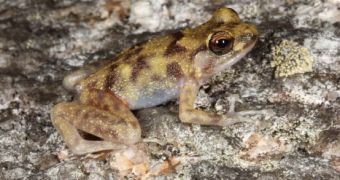Researchers with the James Cook University and National Geographic have announced that, while exploring Australia's Cape York Peninsula back in this year's March, they stumbled upon a region which they claim is best described as a “lost world.”
Before anyone starts thinking that this area is home to a bunch of weird-looking dinosaurs with a tad too much attitude, as is the case in Sir Arthur Conan Doyle's book, it must be said that this remote patch of land earned its nickname thanks to a gecko, a frog and a lizard.
These creatures belong to species that have never before been documented by science, and specialists say that, according to evidence at hand, they have been living and evolving in this isolated and quite harsh environment for millions of years.
“The top of Cape Melville is a lost world. Finding these new species up there is the discovery of a life time – I'm still amazed and buzzing from it,” Dr. Conrad Hoskin commented on these findings.
“These species are restricted to the upland rainforest and boulder-fields of Cape Melville. They’ve been isolated there for millennia, evolving into distinct species in their unique rocky environment,” he added.
The leaf-tailed gecko species found in this remote part of Australia has been named Saltuarius eximius. According to Dr. Conrad Hoskin, adults measure up to 20 centimeters (7.8 inches) in length and look nothing like their relatives in other parts of the world.
They have big eyes and slender bodies, and stay hidden most of the day. By the looks of it, they chiefly show their face in public during nighttime, when they go hunting for spiders and insects.
The new frog species documented in this area is now known as Cophixalus petrophilus. Much like the gecko, it has large eyes and spends lots of time hidden under boulders, especially during the dry season.
“This frog lives most of its life deep in the boulder-fields where it is dark, cool and moist, and only comes to the surface when it rains,” Dr. Conrad Hoskin explained.
The new lizard species, i.e. Saproscincus saltus, shares the gecko's and the frog's love for rocky environments, but prefers to go looking for food during daytime. Its skin is golden colored.
In the future, the researchers plan to return to the area and study this so-called lost world in further detail.

 14 DAY TRIAL //
14 DAY TRIAL //